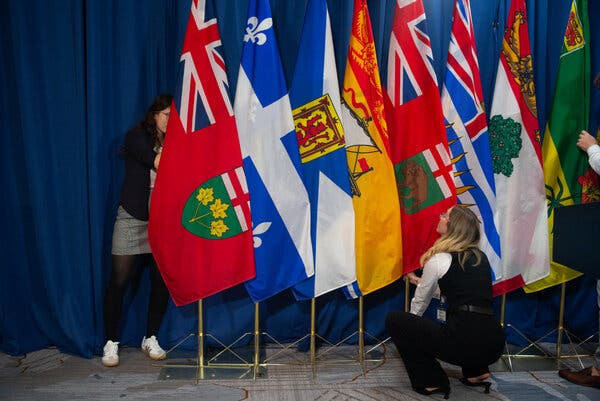The leaders of Canada’s provinces and territories expressed a unified stance against President Donald Trump‘s threats of annexation and his ongoing trade conflict during a three-day meeting. However, as discussions progressed, significant divisions emerged regarding how to respond to the economic implications of potential tariffs. The meeting, which concluded on August 1, 2023, highlighted the complexities of provincial interests in the face of federal challenges.
During the summit, the 13 premiers gathered to discuss the implications of the looming 35 percent tariffs on Canadian exports, which Trump has threatened to impose. While there was consensus on condemning these tariffs, the premiers diverged on strategies for retaliation and economic recovery. Premier Doug Ford of Ontario, who hosted the meeting, emphasized the need for a “united team Canada approach” against Trump’s policies. He advocated for swift action should the tariffs be enacted, urging the premiers to consider retaliatory measures.
The discussions turned contentious when the focus shifted to potential solutions for mitigating economic losses. Premier Ford’s support for rapid infrastructure projects, including oil pipelines, drew mixed reactions from his counterparts. Some provinces expressed concerns about the environmental impacts and economic viability of such projects, leading to disagreements about the best path forward.
Despite the lack of a cohesive strategy, the premiers reaffirmed their commitment to a collective response against the U.S. tariffs. Ford reiterated that unity is crucial in confronting the challenges posed by the U.S. administration. “We need to stand together and make our voices heard,” he stated, underscoring the urgency of their situation.
As the meeting wrapped up, it became clear that while the premiers condemned the tariffs, their differing regional priorities would complicate a unified response. The ongoing trade tensions with the United States have reignited longstanding debates about provincial autonomy and the federal government’s role in economic matters.
Looking ahead, the premiers face the challenge of reconciling their differences while addressing the looming threat of tariffs that could severely impact Canadian industries. The outcome of these discussions will likely shape the economic landscape for provinces and territories in the coming months.
